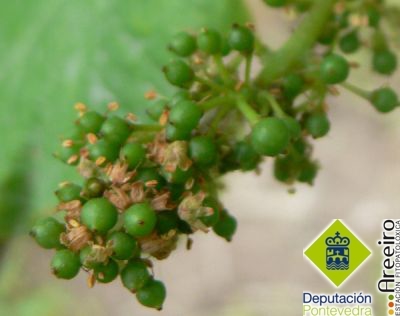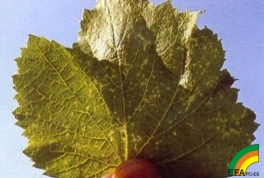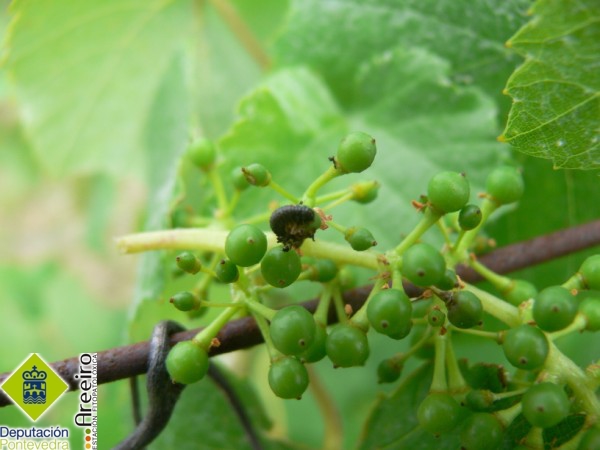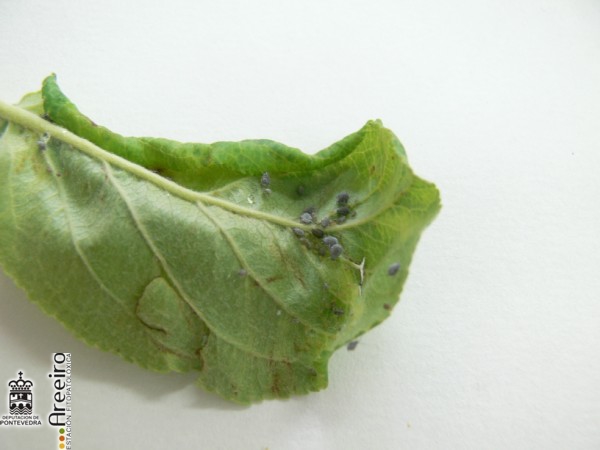|
|
Grapevine and Apple tree |
| |
|
|
|
Grapevine and Apple tree |
| |
|
|
|
Grapevine, Apple tree and Pine |
| |
|
|
|
Grapevine, Apple tree, Oak and
Pine |
| |
|
|
|
Grapevine, Apple tree and Oak |
| |
|
|
|
Grapevine |
| |
|
|
|
Grapevine, Apple tree and Several
crops |
| |
|
|
|
Grapevine, Apple tree, Stone fruits and
Maize |
| |
|
|
|
Grapevine, Apple tree and
Maize |
| |
|
|
|
Grapevine, Apple tree and Chesnut
tree |
| |
|
|
|
Grapevine, Apple tree and Chesnut
tree |
| |
|
|
|
Several Crops, Grapevine and Walnut
tree |
| |
|
|
|
Grapevine and Apple tree |
| |
|
|
|
Grapevine, Apple tree, Several crops and Forestry
species |
| |
|
|
|
Grapevine and Apple tree |
| |
|
|
|
Grapevine, Apple tree y
Cítrics |
| |
|
|
|
Grapevine, Apple tree, Quince tree and
Camellia |
| |
|
|
|
Grapevine, Kiwi plant and
Camellia |
| |
|
|
|
Grapevine and Apple tree |
| |
|
|
|
Grapevine |
| |
|
|
|
Grapevine, Apple tree, Peach tree and
Evonymus |
| |
|
|
|
Grapevine, Various Crops, Kiwi plant, Oak and
Camellia |
| |
|
|
|
Grapevine and Apple tree |
| |
|
|
|
Grapevine, Apple tree and Oak |
| |
|
|
|
Grapevine |
| |
|
|
|
Grapevine |
| |
|
|
|
Pine, Apple tree, Stone Fruit Trees and
Ornamentals |
| |
|
|
|
Fruit Trees, Grapevine and Devices to apply
Phytosanitary Products |
| |
|
|
|
PHYTOSANITARY WARNING
04/06/2009
| VIÑA Phenological stage: |
Condado
and Rosal: fruit set |
| Salnés and Soutomaior: blooming period (end)- fruit
set |
Mildew: |
%20-%20Esporulaci%F3n%20en%20env%E9s%20de%20hoja.jpg) The current phenological stage of grapevine is very sensitive to
mildew and the environmental conditions favour disease development. Thus,
several spots with sporulation have been observed in control plots (untreated)
and isolated spots were also detected in some of our monitoring plots, mainly
in Castrelo (O Salnés area). It is advised
to treat again in case new spots appear, even though the protection
period of a previous treatment did not finish. The current phenological stage of grapevine is very sensitive to
mildew and the environmental conditions favour disease development. Thus,
several spots with sporulation have been observed in control plots (untreated)
and isolated spots were also detected in some of our monitoring plots, mainly
in Castrelo (O Salnés area). It is advised
to treat again in case new spots appear, even though the protection
period of a previous treatment did not finish.
|
Oidium: |
%20-%20Primeros%20s%EDntomas%20en%20hoja.jpg) As we have
reported in a previous phytosanitary warning, first symptoms of the disease
have been observed on leaf, mainly due to the misty weather of these days.
It is necessary to
treat.. As we have
reported in a previous phytosanitary warning, first symptoms of the disease
have been observed on leaf, mainly due to the misty weather of these days.
It is necessary to
treat..
|
Black-Rot:
 |
 Symptoms of
this disease have been more important in O Condado area. Specific antimildew
products are also registered for the control of black rot. Thus, a good
strategy antimildew should also reduce damage caused by this
disease. Symptoms of
this disease have been more important in O Condado area. Specific antimildew
products are also registered for the control of black rot. Thus, a good
strategy antimildew should also reduce damage caused by this
disease.
|
Moths: |
 Male captures
recorded per trap ranged from 4 to 7 males in our monitoring plot. An increment
was also observed in the number of glomerulus, however so far it is not
necessary to treat. Male captures
recorded per trap ranged from 4 to 7 males in our monitoring plot. An increment
was also observed in the number of glomerulus, however so far it is not
necessary to treat.
|
Mites: |
 As it was expected, along this
week we have observed the first populations of rust mites (Calepitrimerus
vitis) but only on control plots belonging to O Condado area. Even
though, acaricides should not be used, unless population
occurrence or symptoms are confirmed. As it was expected, along this
week we have observed the first populations of rust mites (Calepitrimerus
vitis) but only on control plots belonging to O Condado area. Even
though, acaricides should not be used, unless population
occurrence or symptoms are confirmed.
|
Altica: |
  Larval populations have reached a peak along this week in our
monitoring plot in O Condado. Plants should be inspected for any sign of
feeding activity. Larval populations have reached a peak along this week in our
monitoring plot in O Condado. Plants should be inspected for any sign of
feeding activity.
|
| APPLE TREE |
Scab: |
Symptoms
have been observed in untreated plants. Environmental conditions of these days
are highly favourable for the pathogen, thus plants should be monitored
and treated in case the characteristic spots of the disease
appear.
|
Cydia
pomonella: |
Male
captures have been high in some traps. In case the crop protection period has
finished, it must be renewed to avoid catterpillar entering the
fruit.
|
Aphids: |
 This year
aphid colonies are continuously occurring in fruit trees. New populations of
the rosy apple aphid have been detected on apple tree shoots, therefore it is
necessary to treat to avoid fruit deformation. This year
aphid colonies are continuously occurring in fruit trees. New populations of
the rosy apple aphid have been detected on apple tree shoots, therefore it is
necessary to treat to avoid fruit deformation.
|
|

